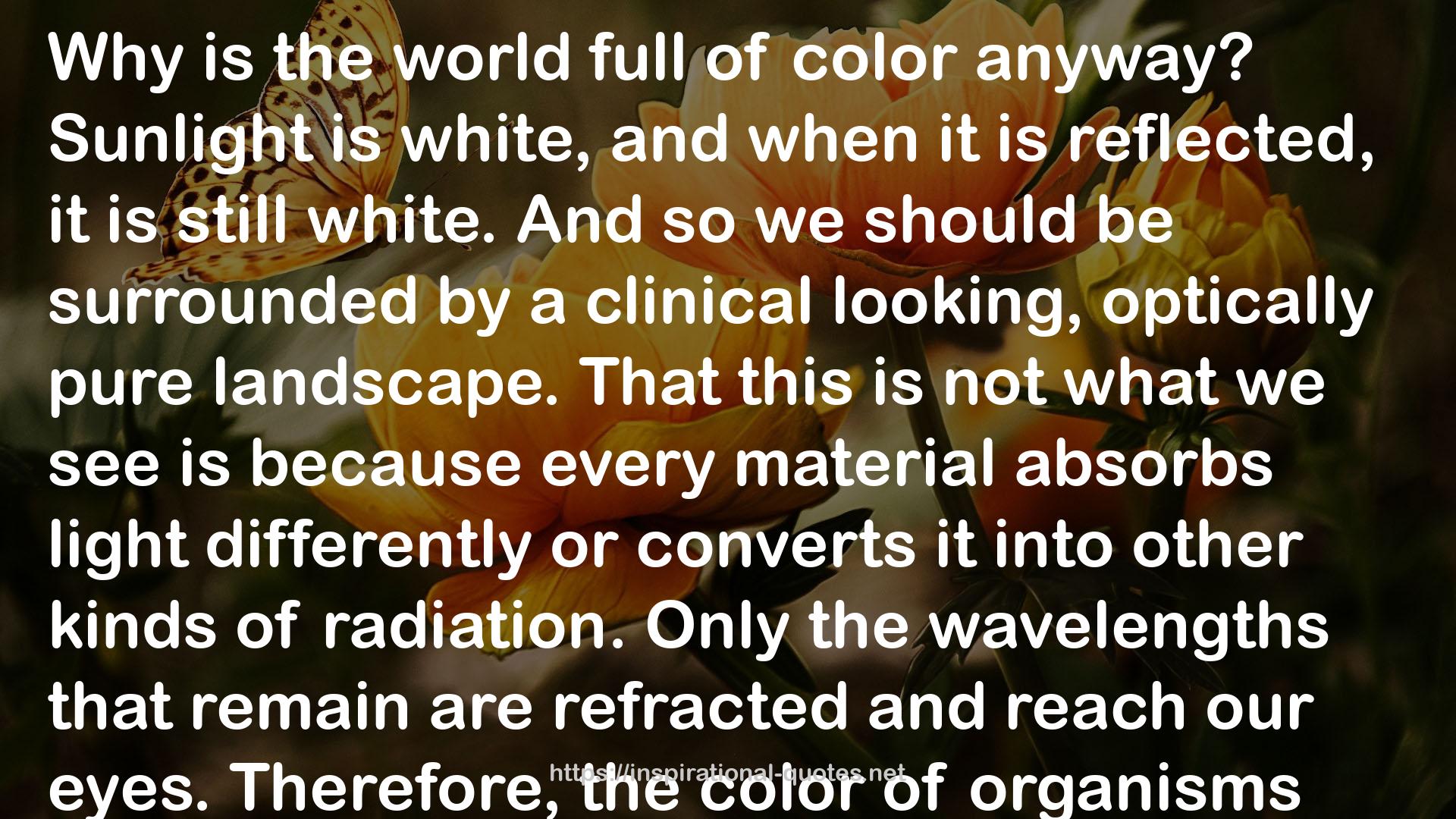" Why is the world full of color anyway? Sunlight is white, and when it is reflected, it is still white. And so we should be surrounded by a clinical looking, optically pure landscape. That this is not what we see is because every material absorbs light differently or converts it into other kinds of radiation. Only the wavelengths that remain are refracted and reach our eyes. Therefore, the color of organisms and objects is dictated by the color of the reflected light. And in the case of leaves on trees, this color is green.
But why don't we see leaves as black? Why don't they absorb all light? Chlorophyll helps leaves process light. If trees processed light super-efficiently, there would be hardly any left over-and the forest would then look as dark during the day as it does at night. Chlorophyll, however, has one disadvantage. It has a so-called green gap, and because it cannot use this part of the color spectrum, it has to reflect it back unused. This weak spot means that we can see this photosynthetic leftover, and that's why almost all plants look deep green to us. What we are really seeing is waste light, the rejected part that trees cannot use. Beautiful for us; useless for the trees. Nature that we find pleasing because it reflects trash? Whether trees feel the same way about this I don't know, but one thing is for certain: hungry beeches and spruce are as happy to see blue sky as I am. "
― Peter Wohlleben , The Hidden Life of Trees: What They Feel, How They Communicate: Discoveries from a Secret World
